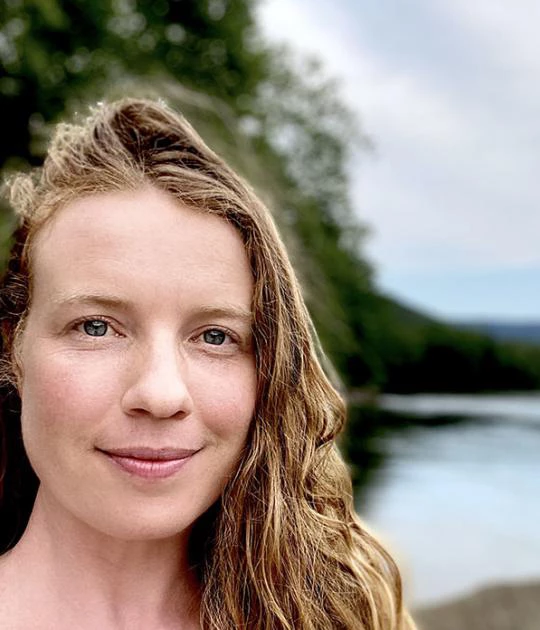 Mangrove forest showing roots under the water
Mangrove forest showing roots under the water
The greatest solutions to a changing climate can be found in nature. As Hurricane Dorian hit the Bahamas, mangroves fringing the coastline were bending under the force of the waves, protecting the communities on shore. In many places around the world, however, these important mangrove ecosystems have been cleared for new coastal roads, aquaculture, or agriculture. Unlike the seawalls built to replace them, mangrove ecosystems have the ability to adapt to a changing climate, sustain biodiversity and livelihood benefits, and sequester carbon. Learning from the experience of Hurricane Dorian, The Bahamas is now incorporating nature-based solutions (NBS), such as the protection of intact mangrove ecosystems or restoration of degraded shorelines, into their climate resilience planning.

Just planting a tree or protecting a forest, however, is not necessarily NBS. For example, while mangrove planting as a restoration approach is popular, many planting projects fail to restore a functioning mangrove system, often caused by a poor understanding of socio-economic conditions, ecological conditions or a lack of community support. NBS are actions meant to protect, sustainably manage, and restore natural or modified ecosystems, simultaneously providing human well-being and biodiversity benefits. As NBS investments are increasing globally, it is critical to ensure that nature-based solutions are in fact solutions. This requires an integrated approach, including rigorous consideration of ecosystem services, societal costs and benefits, engagement with local stakeholders, and long-term maintenance, so that solutions are targeted to the right places and address the most pressing local challenges.
For example, the Belizean government wanted to support thriving tourism and fishery industries while protecting people and infrastructure from storms, so they designed and rallied support for a Coastal Zone Management Plan. In collaboration with the Natural Capital Project (NatCap), the government undertook an extensive community engagement process and spatial modeling of how human activities and uses in the coastal zone would affect the flow of benefits to people from coral reefs, seagrasses, and mangroves. Now at the 5-year mark in implementation, the Belizean government is adapting the plan to ensure that its natural ecosystems and communities continue to thrive in concert. A major challenge identified through this process was ensuring that activities implemented under the plan are resilient to the accelerating shocks from climate change. Such efforts are critical to ensure that NBS projects yield their desired outcomes.
"At a global level, the cost-effectiveness of scaling-up investments in nature-based solutions is clear."
At a global level, the cost-effectiveness of scaling-up investments in NBS is clear. According to the Global Commission on Adaptation, the global benefits of protecting mangroves are over five times the cost, while they protect 15 Million people from flooding per year. However, at the project level, quantifying the benefits and costs of NBS can be challenging. Addressing this challenge, the World Bank and NatCap have together developed knowledge to enable rigorous NBS benefit assessment to inform projects across sectors. For example, in the recently launched international guidelines on NBS for flood risk management by the U.S. Army Corps of Engineers, the Bank and NatCap developed a comprehensive guidance on assessing benefits and costs of NBS. In addition, an online guidance tool was developed to raise awareness on methodologies to assess NBS for reducing landslide risk.
Several World Bank projects have already applied such rigorous approaches. For example, in Beira in Mozambique, the costs and benefits of NBS were quantified to assess the economic viability of investing in nature-based flood protection. In Burundi, NatCap’s open-source ecosystem services models (InVEST) are being used to identify priority areas for scaling up investments in landscape restoration to reduce risks such as landslides that are exacerbated by climate change, while in Malawi InVEST is being used to inform the Country and Climate Development Report.

Especially in cities, there has been a strong increase in demand for NBS from World Bank clients, as it is often in urban areas that climate and sustainable development challenges intersect. To help project teams with the first identification of NBS investments in cities, the World Bank has recently launched a Catalogue of Nature-Based Solutions for Urban Resilience, providing visualizations, an overview of the benefits and location suitability of the main types of urban NBS. Focusing on the biodiversity value of NBS, the Global Platform for Sustainable Cities (GPSC) published a new policy brief, “Urban Nature and Biodiversity for Cities,” presenting the scientific basis for why and how incorporating biodiversity and nature into urban design is crucial for achieving sustainability, livability, resilience, and equity in cities and beyond.
"Nature-based solutions is one of the key priority areas for the World Bank Group as it aims to prioritize adaptation and resilience on several fronts as part of its new Climate Change Action Plan (2021-2025)."
Nature-based solutions is one of the key priority areas for the World Bank Group as it aims to prioritize adaptation and resilience on several fronts as part of its new Climate Change Action Plan (2021-2025). Thus, to bring together knowledge and partners, a new Global Program on Nature-Based Solutions was established under the Global Facility for Disaster Reduction and Recovery. Together with our partners, the program will seek to raise awareness, and support capacity building of communities, cities, and countries to mainstream NBS for climate sector across sectors for a green, resilient, and inclusive development.






Join the Conversation